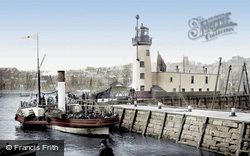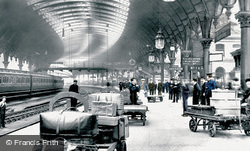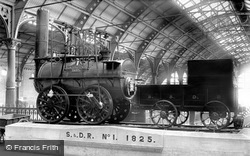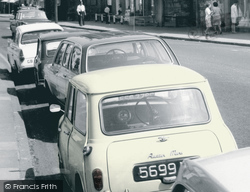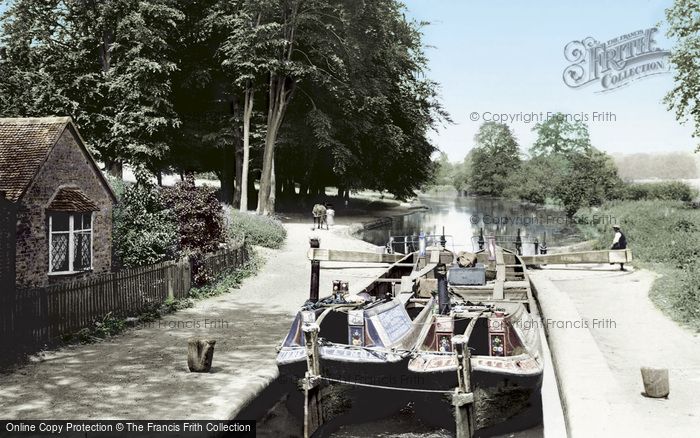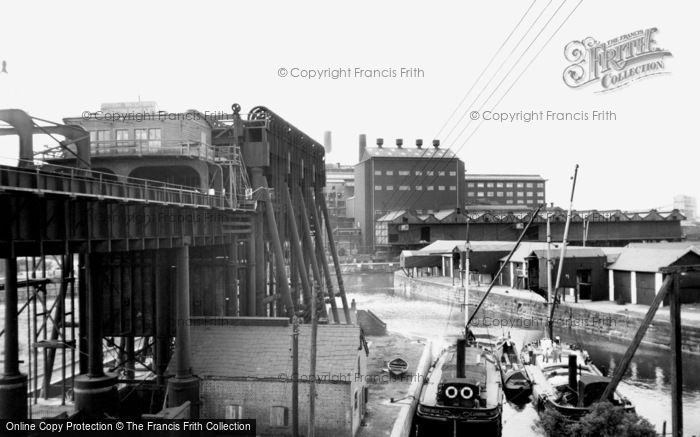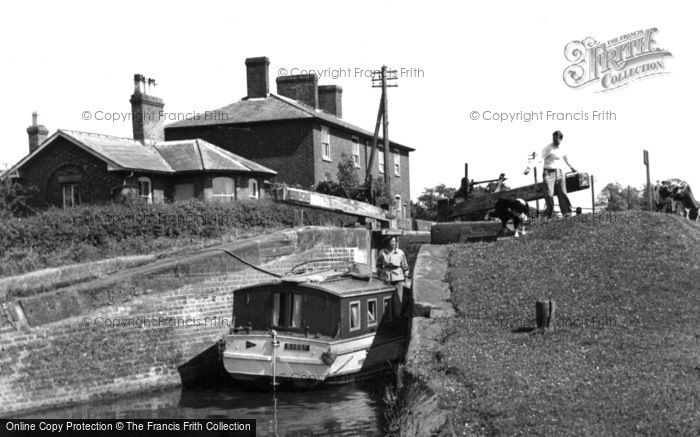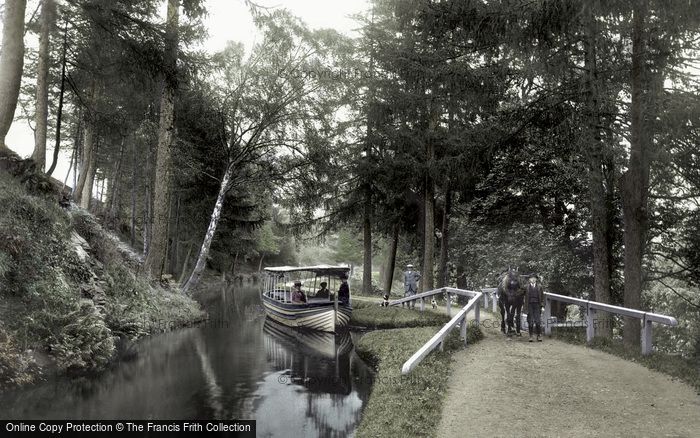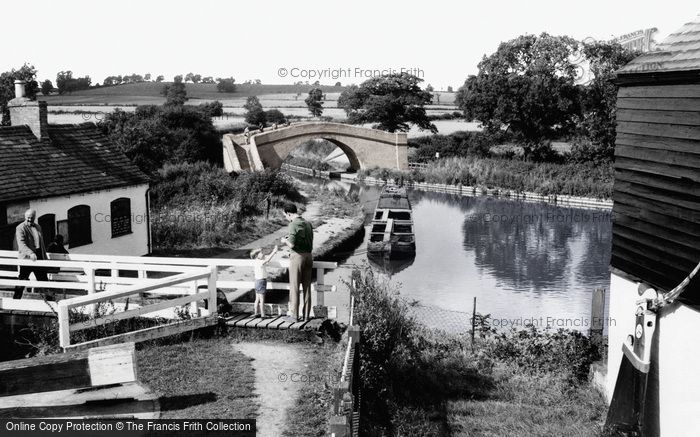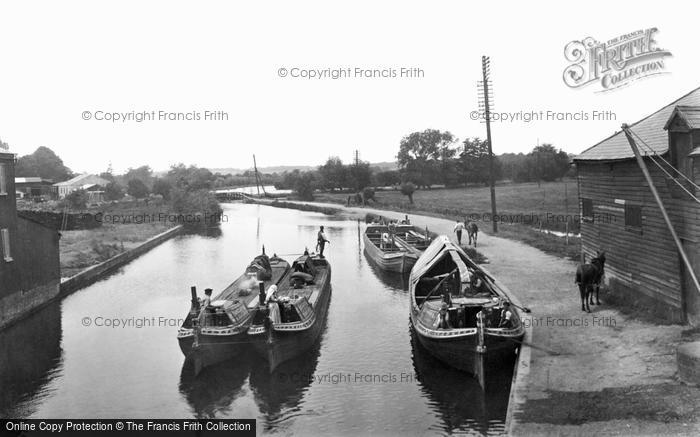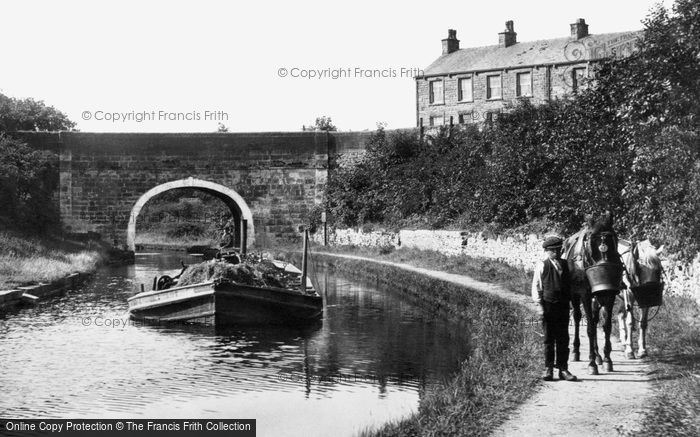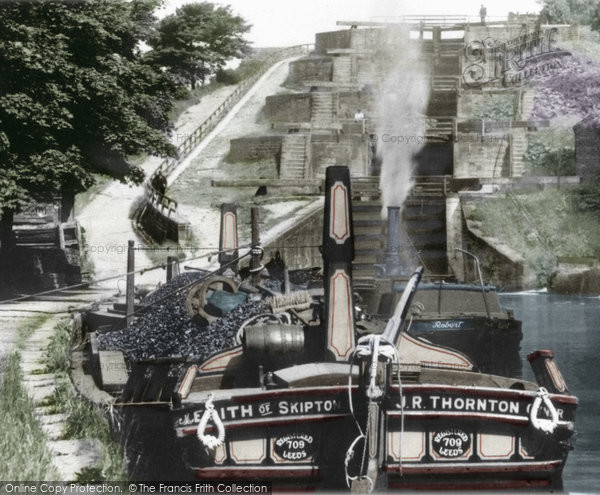Along the towpath
Published on
January 25th, 2018
Join us on a nostalgic walk down the towpaths alongside Britain's canals with this special selection of photographs from The Francis Frith Collection. Featuring photographs of The Grand Union Canal, the Trent & Mersey Canal and the Bridgewater Canal and more.
Here we see two horse-drawn narrow boats, the ‘Linnet’ and the ‘Evelyn’, belonging to George Garside, at the attractively sited lock in Cassiobury Park, Watford. The barge horse and his female driver enjoy a brief rest while waiting for the Iron Bridge lock to fill so that the gaily painted butty boats (which are ‘breasted up’ in together in the lock) can continue on their tandem journey along the Grand Junction Canal. Meanwhile, the bargee waits for the water levels to equalise before he swings the heavy gates open. This was just one lock in the long climb from the west edge of London up the Chilterns: there were 25 miles and 42 locks on the Grand Junction Canal, the original main transport artery between London and Birmingham. The Grand Junction was redesignated the Grand Union Canal eight years after this photograph was taken when it was linked up with seven other canals.
At Anderton, near Northwich, the Trent & Mersey Canal and the River Weaver ran parallel with each other, with the canal being just 50 feet above the river. The innovative Anderton Boat Lift, ‘the wonder of the waterways’, linked the Trent & Mersey Canal (above) with the River Weaver (below). Narrow boats entered a caisson along the trough to the left and were lowered down to the river – one such can be seen sandwiched between two barges in this photograph. Originally the life operated on a hydraulic system, with two counter-balanced water-tight tanks raising and lowering boats, but it was electrified in 1908 and the system modified so that the tanks could be operated independently. The whole system was powered by a tiny 30 horsepower electric motor. In 1983 corrosion of the main support legs forced British Waterways to shut the lift down, but a renovation programme has now returned the lift to full working order.
The Shropshire Union Canal was owned by a railway, the LMS, and was formed in 1864. It runs between Wolverhampton and Ellesmere Port. It passes through delightful countryside, and maintains a level for twenty miles until it reaches Wheaton Aston. The lock keeper’s cottage (left of photograph) is now a private house, and the large building behind has gone.
This woodland on the Llangollen canal seen in this photograph, just outside the town, still exists today, and the canal’s channel has been extensively improved. What is now Britain’s most popular cruising canal was actually built as a water supply to the Ellesmere Canal further downstream. Long before the holiday boat industry took off, a trip behind a horse-drawn boat in Llangollen was a popular outing, especially where the canal spans the Dee using Thomas Telford’s marvellous 121ft-high Froncysyllte Aqueduct, built in 1805. The boats were towed to the end of the cruise and then both horse and rudder were moved to the opposite end for the return trip, thus solving the problem caused by the lack of turning space. Here we see a horse leading a somewhat empty pleasure boat towards the aqueduct for what can be an unnerving experience.
In 1759, the Duke of Bridgewater financed the building of the first proper canal – the Bridgewater Canal – to transport coal from his mine at Worsley to the industrial areas of Manchester. When the first stretch of this canal opened in 1781 it revolutionised the transportation of goods, and ushered in a frenzy of canal building all around the country. After the Second World War, the use of canals around England for the transportation of industrial goods almost completely ended. However, the boat seen on the Bridgewater Canal at Lymm in this photograph is still working in the 1960s, carrying a cargo of coal.
The Foxton inclined plane near Market Harborough served the section of the Grand Union Canal known as the Leicester line. The Foxton inclined plane, a late 19th-century engineering feat, lifted loaded barges up the hillside in a cradle. When the canal was first built here between 1808-14, a narrow boat trip through the ten locks here would take about one hour. Because of the length of time it took to go through the locks, an inclined plane was built between 1897-1900, which raised or lowered the narrowboats from one end to the other in under ten minutes. By about 1930 this amazing piece of machinery was in a state of disuse and the metal parts were sold as scrap, but The Foxton Inclined Plane Trust has now been formed to restore and care for this important part of our heritage.
This shows part of the Grand Junction Canal at Rickmansworth in south-west Hertfordshire, which was re-designated the Grand Union Canal in 1929 when it was linked up with seven other canals, and portrays an excellent example of co-operation between barges on the busy canal network. The two central barges have been lashed together in order to bypass those moored alongside the canal bank. The barge horse of one of the craft is being led forward along the towpath and will soon be harnessed up again, whilst the other waits on the right for the manoeuvre to be completed. The bargee of one of the craft stands on the bow ready to cast the towing line ashore, and the bargee woman at the tiller behind him is still wearing a traditional bonnet, even in the 1920s. The photo was taken from the road bridge looking south just below Batchworth Locks. The wooden building on the right is now gone, but the iron bridge in the distance is still there; the small river to the right of the towpath is the River Chess, and the body of water to the far right is now Rickmansworth Aquadrome.
Its rugged stone bridges and its proximity to the Pennines make the Lancaster Canal a most picturesque line. Carnforth is towards the northern end; the top section was abandoned after the M6 motorway was built. Here we see a barge in 1918 loaded down with hay, with the two horses taking a break as the photographer creates his picture.
The five rise locks at Bingley are part of the Leeds & Liverpool Canal, and are one of the wonders of the waterway system. They are known as staircase locks, because the top gate of each chamber is also the bottom one of the next: there is no water between the two.
Perhaps you'd like..?
If you liked our "Along the towpath" Blog Feature, you might like to see and follow this
Francis Frith board over on Pinterest.
Join the thousands who receive our regular doses of warming nostalgia!
Have our latest blog posts and archive news delivered directly to your
inbox.
Absolutely free. Unsubscribe anytime.



